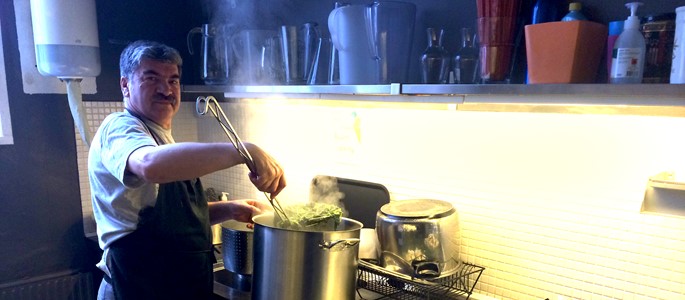Reception system is a barrier for refugees' job access
The great potential that refugees represent can be used much better. Recent research and experts point to the same solutions.
(Some links in the text are unfortunately only in Danish)
Much of the resistance towards refugees, among the population as well as the politicians, are about economics. Refugees are seen as an expense, on both short and long term, because many refugees end up on social benefits. But a number of experts and research studies have lately pointed out that this situation can be changed, thereby turning refugees from an expense to an income.
The consulting firm QVARTZ has recently on their own initiative made a white paper, describing how the skills of refugees can be used better in the Danish labour market. They present 29 concrete recommendations which are quite easy to introduce, and which would probably turn the picture around after a short time. Today only less than 3% of the new refugees are considered ready to work by the municipalities, but QVARTZ believes this number could increase with at least a factor 20.
One of the recommendations is introducing a national register for skills, into which asylum seekers should be registered shortly after arriving in Denmark. Besides, it should be made easier to get jobs, serious internships and education programs during the asylum phase, as well as easier access to move out of the asylum centers. Municipalities, job centers and businesses should work together to make best use of the resources that refugees posess, among other things in the form of knowledge sharing and common standards.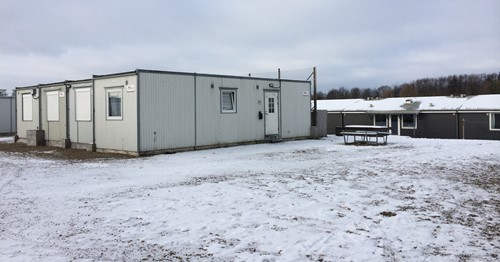
Change the asylum phase
One of the major barriers is in fact the asylum system itself. Roughly all asylum seekers express a wish to work when they arrive – and almost all of them have been used to providing for themselves. But staying in the asylum centers remove them from the Danish labour market in stead of preparing them for it. Their motivation and self confidence is quickly worn down during the often long, anxiuos waiting time; isolation from the surrounding society and the forced passivity break down their skills. Tasks and internship in the centres are very limited and often far away from 'the real world'.
"Motivation and willingness to work is killed by the stagnation in the center – you don't recognize the asylum seekers after one year. Only a few handfuls have still been ready for a job on the other side of the asylum process during the three years I have been here, but everybody is ready to take a job when they arrive." Quote from an asylum center staff member in the QVARTZ white paper.
As we have recently described in REFUGEES.DK the purpose itself of the activation program in the asylum centers is contradictory to integration, read PhD Katrine Syppli Kohls article "An asylum system in internal conflict". All conditions during the asylum phase have to be reconsidered with a focus on registration of skills, upgrading and integration if we want refugees to be self-supporting.
The new three-parties deal (between government, unions and employers) points in the same direction; the asylum phase should be used to clarify and upgrade the skills of the refugees, and much more collaboration between asylum centres, municipalities and Immigration Service is needed regarding placement of refugees, Danish language school should be combined with jobs and job training, and a two-year basic education for refugees will be introduced.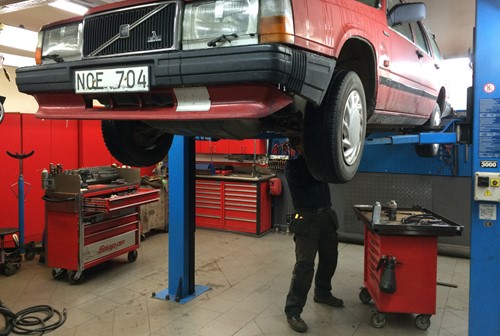
Ready for the labour market
So far, making refugees self-supporting has not been a success, according to Agenda. After three years only 15% of the refugees are working, and even after 10 years in Denmark the number has only increased to 25%. In comparison, 73% of the Danes were working in 2013.
At the end of 2015, only 282 out of 13,844 new refugees had been found ready to work. This equals less than 3%. The explanation is mainly the fact that their Danish language- and computer skills were not yet good enough to log on every week to the digital 'Job net', where they are also supposed to upload a CV in Danish. Afghans had the highest rate, twice as high as Syrians. However, there are big differences between the municipalities – Roskilde found 58% to be ready, but 85% of the other municipalities found 0% to be ready for a job.
It seems curious that lack of language skills alone is considered a barrier, when bearing in mind that thousands of people from Eastern Europe find fulltime jobs before speaking a word of Danish. And research shows that the fastest way to learn Danish is by combining language school with job or job training. The new three-parties deal concerning refugees is also trying to put an end to the rigid language demand.
Many municipalities are too slow to get started on activation and language school – refugees are more motivated just after arriving in Denmark, and again just when they receive the residence permit and move to the municipality. This energy is lost during the first couple of months where they meet a buraucratic and rigid system, first in the asylum centre and later in the municipality. A lof of incomprehensible rules must be followed, and nobody seems to need the experience that the refugee brings with her. This leads to a sense of disillusion which is hard to get rid of again.
Finding a job is not easy either, when you are new in the country. Many Danish jobs are found through personal networks and require references from former employers. Education and experience from the home country can rarely be used directly in the Danish labour market. And finally, many Danish employers are still reluctant towards hiring refugees.
A young man from Sudan came 5 years ago and has almost finished an education as a plumber, but he was not able to find the job as an apprentice that is normally required. He says: "Why do they give me a residence permit, if I never get a real chance? We were only two foreigners in my class, and we were the only ones who never found an apprentice job. And by now, education no longer gives access to permanent residence, so it will take many years before I can get that."
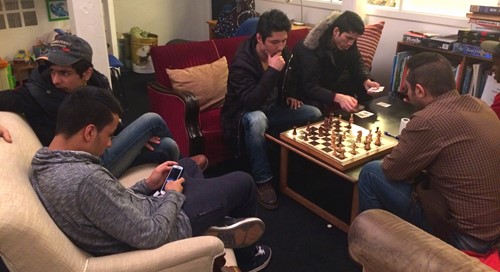
Health and trauma
A special challenge regarding refugees is health – mental as well as physical. Sarah Fredsted Villadsen from Social Medicine at Copenhagen University says: "Health is a condition for good integration, as integration is a condition for health. But our wellfare institutions are made to meet citizens with a fairly similar cultural background, who knows how to navigate in the health care system. This is not working for citizens with different backgrounds, linguistic, culturally and socially."
In 2013 a mandatory health check for new refugees was introduced by the former government. However, very few of the municipalities actually made them, and now the new government has abolished them again.
A large part of the refugees coming to Denmark have been exposed to traumatizing experiences. They have been through war, seen people being killed in frint of their eyes, seen assaults committed against themselves or close family members, or have been directly exposed to torture. This does not mean that they are not ble to work or take an education, but the trauma have to be treated and handled in a sensible way.
PhD student Charlotte Kærgaard Sonne has recently documented that traumatized refugees in Denmark are on average waiting 14 years before going into treatment. This is an overlooked issue which also affects second generation of refugees in a negative way.
"Patients are becoming very hard to rehabilitate when they carry untreated trauma around for a long time. Refugees get worse as years go by. The problems become permanent, and there is a growing risk that the refugee will turn her back on society all together," says Charlotte Kærgaard Sonne, who is working at Centre for Transcultural Psychiatry in Ballerup.
Refugees who feel bad are rarely sufficiently examined – neither in the asylum phase nor later in the municipalities. The local doctors are not able to identify a trauma from war or torture. The job centers see them as unwilling and hard to get activated, and slowly give up on them. Many end up on a pension at some point and become even more isolated.
"Rehabilitation also includes occupation. The health care system sometimes has the conception that refugees must be protected against the labour market, and there is a lack of understanding of the fact that a multidisciplinary approach has to include a job offer. Even if the refugee comes from war zones and suffers from trauma, we know for a fact that occupation helps many refugees," says Lars Larsen from the research company LG Insight, specializing on integration.
Women at work
The occupation rate for women is even lower than for men – in fact extremely low. After four years in Denmark, only 5% of the refugee women are working. This is only one woman for every four men.
Several things play a part here, among them are lack of job experience from the home country and a lower level of education. Culturally it is also a big step to move from countries where women most often take care of home and children to Denmark that has one of the world's highest rates of women working – almost the same as for men.
However, women are doing fine in the language schools where they are better than the men at finishing with an exam. And there is nothing to indicate that they lack motivation to get out of the home and become independent – they simply have a hard time using the existing tools, built on a basis of gender equality which these women did not grow up with. Refugee women are often used to hard work and great personal responsibilty. But these skills have to be adjusted to fit into a Danish labour market. We also have to accept that it takes more time – not least because the women have to gradually get used to handing over their small children in daycare, something which is unique for the Scandinavian countries and seen as inhumane by the newly arrived.
Integration allowance – incitement or brake?
The 'integration allowance' will after July 1 bring 21,000 people below the poverty limit and make it impossible for many to pay the rent and also buy food and other necessities. See the budget that REFUGEES.DK has set up for a family on integration allowance.
The social workers in the municipalities are overloaded by many reforms and new rules on all kinds of social benefits, and they do not have the time to help and advice refugees on the new situation. They are not able to find cheaper accomodation – even before the allowance was reduced (by half, approximately), many municipalities had a hard time finding housing for their citizens. Some social workers do not even realize how the new rules work and what a serious impact they will have.
The purpose of the integration allowance is getting more people off wellfare, but according to the government's own calculations, only 2-3% of the affected 21,000 will find a job. And according to Arbejderbevægelsens Erhvervsråd (Unions' Resarch Institute) and Lejernes Landsorganisation (National Association of Tenants) the low benefit will in fact have the opposite effect, because the low rents are only found in areas with very few job opportunities. At the same time, a life below the poverty level leads to greater isolation and more mental and social problems.
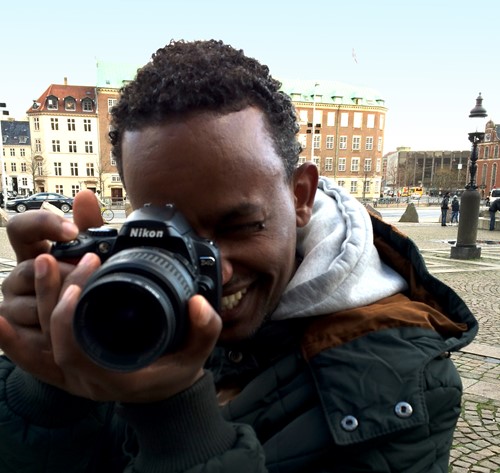
Are refugees an expense at all?
As long as a refugee stays on social welfare, this is of course an expense for society. But as soon as more are moving into the labour market, the whole balance is tipping. According to a new report from the acknowledged economist Philippe Legrain from London School of Economics the new refugees in the EU will contribute with twice as much as they cost already within 5 years.
“The main misconception is that refugees are a burden – and that’s a misconception shared even by people who are in favour of letting them in, who think they’re costly but it’s still the right thing to do,” said Legrain in an interview. “But that’s incorrect. While of course the primary motivation to let in refugees is that they’re fleeing death, once they arrive they can contribute to the economy.”
Refugees do not take jobs from others, as there is no fixed number of jobs. On the contrary they push the economy by paying taxes and buying goods, and more jobs are created. Refugees are also an important antidote against the quick rise of elders in Europe. Among the refugees arrived in Denmark in 2016, 41% are below 18 years of age, and only 8% are above 40.
However, Legrain warns, in line with QVARTZ, that we have to prepare the refugees for the European labour market already during the asylum phase: language courses, education programs, right to work and not place them in areas without jobs.
The Danish work market researcher Bent Greve pointed out earlier this year that refugees are a far better investment than lowering the top taxes. "Far too many Danes consider refugees and migrants as a burden, putting pressure on budgets by receiving social welfare. But we should talk about how they can become a profit. And that it is a good idea, both from a human and from an economic view, to invest in refugees," he states.
He has three clear recommendations, in line with the 29 new ones from QVARTZ:
- Asylum seekers should have Danish language courses from day one. Apart from learning the language and the culture it also gives them something meaningsful to do every day.
- The skills of a refugee should be laid out very fast and systematically, so that an upgrading of skills leading to a job can be combined with the language training. Those who are ready should quickly be employed.
- Economic support to refugees should not be cut down to a level that it keeps them from participating in social activities. The municipalities should grant a free pass for refugees so that both adults and children can take part in sports, evening courses and other leisure activities.
Conclusion: Both researchers, employers, unions and refugee workers are coming to an agreemant that many more refugees can be self-supporting if the reception in the centres and the municiplaties is changed. This will be a benefit for all of us, both from an economic and a human perspective.
All photos: Michala Clante Bendixen


